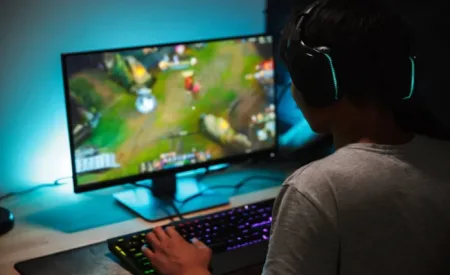Game designers and development companies swear by the adage, “First impression is the last impression.” That said, paying attention to a video game’s design is crucial in grabbing the player’s interest. From engrossing storylines to interactive gameplay, there’re various intricacies to designing a blockbuster game.
Let’s understand how designers fine-tune the game’s design to maximize playing time.
Well-crafted Storyline
With storytelling techniques, designers make the entire game more immersive. A thoughtfully curated storyline with plot twists makes the video game more exciting, fun, and rewarding.
Moreover, a good narrative creates an emotional connection between the game and gamers.
There’s a reason Hollywood recreates some games into full-fledged movies for big-screen release. Did you watch Hitman, Resident Evil, or Assassin’s Creed? You already know the hype behind video game stories!
Incentivize with Virtual Assets
Game designers think beyond standard gamified solutions to reward players like point-based systems.
These days, you can win unique, valuable rewards during the gameplay by completing the in-game events, challenges, or tasks. The competitive experience of earning rewards also gives a feeling of accomplishment to gamers.
The reward mechanism can range from skins and weapons to loot boxes. Usually, these virtual items or incentives usually align with the game’s context and style. Further, video game designers collab with influencers to offer exclusive in-game items or skins to help drive engagement.
The in-game items keep gamers committed. Hence, virtual goods or rewards are an effective game-designing strategy to satisfy the players.
Including the Element of Surprise
Unpredictability makes players curious about what happens next. The surprise element also refreshes the player’s mind.
Hence, game designers introduce surprise or hidden levels filled with obstacles that enhance the playing experience. An exciting game plot with randomly generated levels will keep the players on the edge of their seats.
The game mechanics consisting booby traps or hidden reward items will challenge players. Besides, they test the players’ problem-solving skills. So the more complex the task, the more satisfaction a player derives on clearing it.
Adding Leaderboard
Leaderboard shows who performed the best in a particular gaming activity. This designing technique is more common in social casino games.
Some game developers also announce the tournament winners through their social media pages. Posting the leaderboard online stimulates competition that improves player engagement. People have more positive experiences with leaderboard integration due to social comparison.
Imagine others seeing your name at the top during an online roulette gambling event. People feel proud of sharing their achievements with others. Designers use leaderboards based on this human psychology.
Besides, this promotional strategy entices a person’s connections to join competitive game events.
Phased Race Events
This new game design template takes basic race events to the next level. A ‘phased’ system indicates additional race challenges to give a twist to the main plot.
Players will compete with other online gamers to earn rewards in a specific race event. If you win, you’ll unlock boosters, extra credits, or energies to continue the game.
For instance, the Airship Race in the Gardenspace game uses the phased race system. The top three players on the scoreboard win exciting incentives like dynamites, extra playtime, or boosters to enhance the overall game experience.
Your chances of earning more points to win the race increase when you play more. Simply put, it’s a ploy by game designers to make gamers indulge in longer gaming sessions.
A Touch of Personalization
Gameplay tailored to an individual player’s choice is another design element that keeps the gamers hooked. A personalized game design is usually prominent in role-playing video games.
It allows players to customize a character’s looks and other game elements based on personal preferences. For instance, you can give a name to your avatar or pets in the game. You can also change the decor of your house.
The personalization feature gives them a sense of ownership when they use their decision-making skills to figure out the game’s mechanics.
So let your creative juices flow with this customization mechanism.
FAQs
- What are the 4 elements of game design?
Four key elements of engaging game design are storyline, mechanics, rewards, and technology.
- What is AAA game design?
The grade “AAA Game” classifies high-profile and high-budget video games. These are gaming titles with tens or hundreds of millions of dollars in budget. Usually, big-scale, renowned iGaming companies produce and distribute these video games.
Final Thoughts
A game designer ensures to create a sense of immersion for the players. A fascinating plot with challenging tasks and a mission to earn rewards and virtual assets boosts the gamer’s engagement.
The aesthetic value combined with the satisfaction of clearing complex game levels encourages gamers to play for a longer time.



